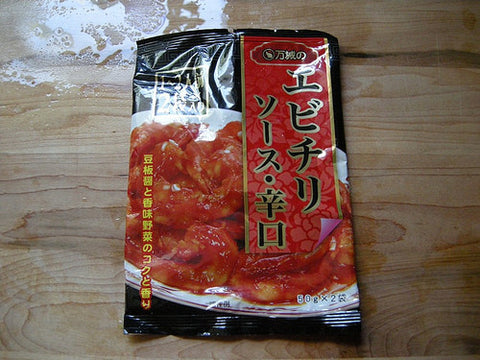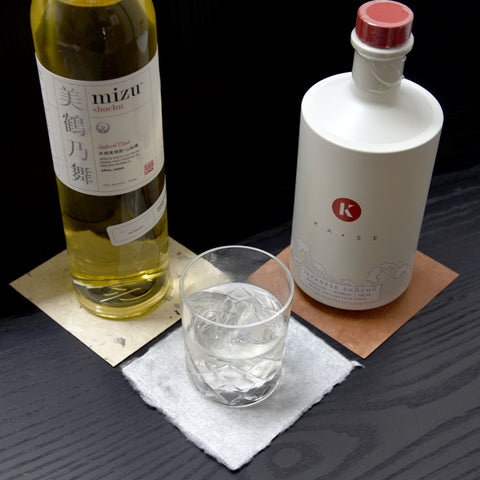
I eat a lot of instant ramen. I've cut down a lot – I used to eat it once a week, living in NYC in my 20s on a non-profit museum paycheck. But even now, as I begin my 40s, I'd say I make myself a bowl about twice a month. It's just so easy, I can't resist! (It's the perfect meal when you're starving and have 20 minutes before a cranky toddler wakes up). At this point I can make it in my sleep – I've got the timing down to instinct, as to how hard I like my noodles cooked, when to add the broth, when I know it's done.
I've gone through many different favorite instant ramen brands through the years: Sapporo Ichiban, Chuka Zanmai, Nong Shim. Chuka Zanmai was my all-time fave until recently when the noodles have changed to a more soggy consistency. It's a shame.
Through all my instant ramen phases, I've always had my trusty Yukihira Nabe. These pots are made with hammered aluminum, and is incredible for making instant ramen as it retains heat intensely, so you can make a bowl of ramen really fast. Plus it's super easy to transport from pot to bowl – as you'll see below.
I also use this pot to boil pasta, steam broccoli, and make sauces. It's very handy.
Now, we've added instant Kitakata Ramen to our shelves, which is really exciting. Kitakata is a city in Fukushima prefecture, known for their specific type of ramen – curly, wider noodles with a nice chewy texture. The Kitakata Ramen franchise was really big one summer when I visited Japan as a child. My aunt took me to an outpost in Yokohama and when I finished my bowl, it was so good that I requested another. And she said yes! Oh how I miss that 12-year-old metabolism.
What's especially great about these instant Kitakata ramen packs is that the noodles are not deep fried, but air dried, so they are a tad healthier than other instant ramen brands. I highly recommend it! Here I made the flavor Umakara, which, for Japanese food standards, is very spicy. I bet they were trying to make a Nong Shim ramen equivalent for the Japanese market. It's that spicy and RED! Are you up for the challenge??? (For those less adventurous, I recommend the Kitakata Shoyu).
INGREDIENTS
Serves 1
1 package Kitakata Umakara ramen
Handful of greens of choice (I like cabbage or bok choy), chopped to bite-size pieces
1 slice ham or deli meat
1 egg
2 stalks green onion, chopped
Slices of kamaboko (optional)
Tools: Yukihira Aluminum Nabe Pot
METHOD
1. Boil 2 cups of water in the Yukihira pot.

2. While water is boiling, chop greens. I like to add the green tops of the green onions here as well, to add more flavor and nutrients.

Y'all know that we aren't eating instant ramen for nutrition. However, I like to load up on vegetables here to get some nutrients from this meal.
3. This is an important step – the noodles. The timing of this is critical; you don't want to overboil the noodles or else they will be limp and soggy!

However, because these noodles are air-dried, and not fried, they take a bit longer to cook than your average Sapporo Ichiban instant noodle (5 minutes for Kitakata versus 3 minutes for Sapporo). You want to make sure to leave them in for at least 5-6 minutes or else the noodles will be underdone.

Once the water is boiling, add the noodles.

4. About 2 minutes into boiling the noodles, add the greens and onion.

5. Turn the heat on medium and cover (this helps the egg to cook through). You need to turn down the heat a little or else it will boil over.

6. While this is happening, prepare the garnishes: kamaboko, ham, and onions.

Kamaboko is fish cake. I could eat blocks of this in one sitting, especially during New Years, when all the super special versions are released in the Japanese markets. It is one of my favorite foods – enjoy slices by itself with wasabi and a glass of sake, or atop noodles or in scrambled eggs. I always opt for the pink kamaboko, over the plain white. Who doesn't want a flash of neon pink in their bowl of ramen?!
Ham and negi are a must for instant ramen. You can use any type of deli meat you prefer here, but I think ham is best (current favorite is True Story Maple Ham).

7. Once it's been about 5 minutes, check to make sure the noodles have cooked through. Add the sauce. Mix.

8. Pour contents of nabe into your ramen bowl.



9. Garnish.

See, the kamaboko is so necessary and festive!

Noodles are bouncy and curly – the best!

I like my egg to be mostly cooked, just a tiny bit of rawness in the middle. This here is pretty spot-on.

Enjoy with a side of kimchi!

I'm sure you all have mastered the art of instant ramen and have a few tricks up your sleeves yourselves. Share them in the comments!
P.S. the Yukihira Nabe is perfect for sauces too. Here's a recent Carolina bbq sauce we made:





Comments (0)
There are no comments for this article. Be the first one to leave a message!